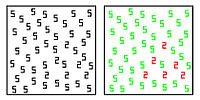# 61. V. S. Ramachandran.(part #4.)
Phantom limbs.
When an arm or leg is amputated, patients continue to feel vividly the presence of the missing limb as a "phantom limb". Building on earlier work by Ronald Melzack by (McGill University) and Timothy Pons (NIMH), Ramachandran theorized that there was a link between the phenomenon of phantom limbs and neural plasticity in the adult human brain.
In particular, he theorized that the body image maps in the somatosensory cortex are re-mapped after the amputation of a limb. In 1993, working with T.T. Yang who was conducting MEG research at the Scripps Research InstituteRamachandran demonstrated that there had been measurable changes in the somatosensory cortex of several patients who had undergone arm amputations.
Ramachandran theorized that there was a relationship between the cortical reorganization evident in the MEG images and the referred sensations he observed in his subjects. He presented this theory in a paper titled "Perceptual correlates of massive cortical reorganization."
Although Ramachandran was one of the first scientists to emphasize the role of cortical reorganization as the basis for phantom limb sensations, subsequent research has demonstrated that referred sensations are not the perceptual correlate of cortical reorganization after amputation.The question of which neural processes are related to non-painful referred sensations has not been resolved.
Mirror visual feedback
Ramachandran is credited with the invention of the mirror box and the introduction of mirror visual feedback as a treatment for a variety of conditions associated with phantom limb pain, stroke, and regional pain syndrome.
Several research studies using mirror therapy have produced promising results. However, mirror therapy has produced conflicting results in randomized controlled trials and the applications of mirror therapy are still under experimental evaluation.
Phantom limbs.
When an arm or leg is amputated, patients continue to feel vividly the presence of the missing limb as a "phantom limb". Building on earlier work by Ronald Melzack by (McGill University) and Timothy Pons (NIMH), Ramachandran theorized that there was a link between the phenomenon of phantom limbs and neural plasticity in the adult human brain.
In particular, he theorized that the body image maps in the somatosensory cortex are re-mapped after the amputation of a limb. In 1993, working with T.T. Yang who was conducting MEG research at the Scripps Research InstituteRamachandran demonstrated that there had been measurable changes in the somatosensory cortex of several patients who had undergone arm amputations.
Ramachandran theorized that there was a relationship between the cortical reorganization evident in the MEG images and the referred sensations he observed in his subjects. He presented this theory in a paper titled "Perceptual correlates of massive cortical reorganization."
Although Ramachandran was one of the first scientists to emphasize the role of cortical reorganization as the basis for phantom limb sensations, subsequent research has demonstrated that referred sensations are not the perceptual correlate of cortical reorganization after amputation.The question of which neural processes are related to non-painful referred sensations has not been resolved.
Mirror visual feedback
Ramachandran is credited with the invention of the mirror box and the introduction of mirror visual feedback as a treatment for a variety of conditions associated with phantom limb pain, stroke, and regional pain syndrome.
Several research studies using mirror therapy have produced promising results. However, mirror therapy has produced conflicting results in randomized controlled trials and the applications of mirror therapy are still under experimental evaluation.

